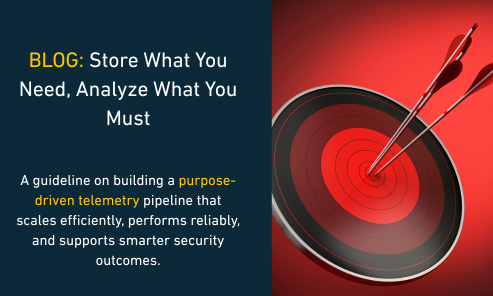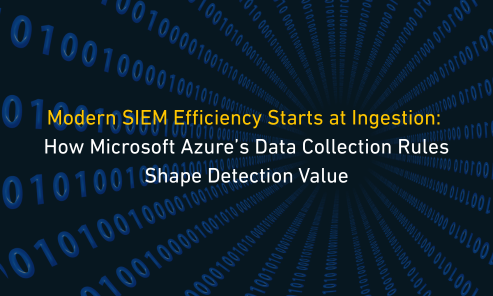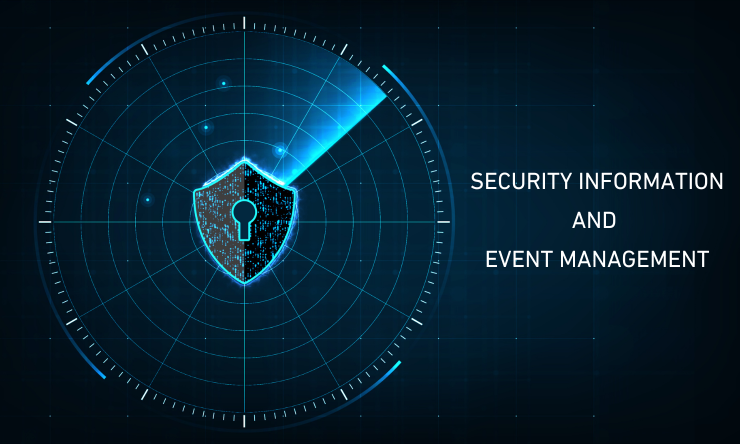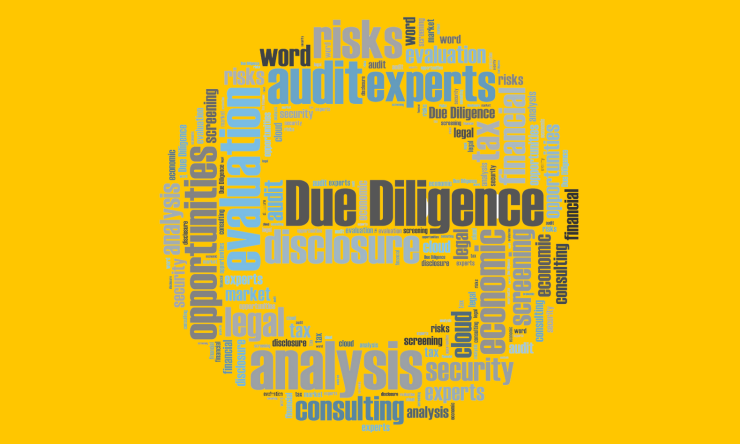RESOURCES

The cyber security world as well as the mainstream media has recently been focused on EDR technology, unfortunately in this case for the wrong reason and the importance of this technology is obvious due to the impact that has been seen and reported on, across the globe in almost all industries. In this post we'd like to take a very brief look the evolution of defensive software from early threat specific antivirus, through to the EDR platforms we know today.
Key Milestones
- 1987: Introduction of commercial antivirus software.
- 1992: Establishment of independent antivirus testing.
- 2001: Shift towards heuristic and behavioural detection methods.
- 2010: Development of Next-Gen Antivirus (NGAV).
- 2013: The emergence of early Endpoint Detection and Response (EDR) solutions.
Malware has undergone substantial transformations since the Creeper worm in 1971. To counter Creeper, an antivirus named Reaper was specifically designed to eradicate this early form of malware. The 1980s saw the advent of commercial antivirus solutions, with pioneers such as McAfee and Norton leading the charge. The early 2000s introduced more advanced detection methods, including heuristics and behavioural analysis, the 2010s saw a significant evolution with the emergence of next-generation antivirus solutions. Companies like Cylance and CrowdStrike began leveraging artificial intelligence and machine learning, significantly enhancing threat detection and response capabilities, this progression brought us to the EDR solutions we are familiar with today.
EDR solutions are now the status quo for the detection, investigation, and mitigation for endpoint based security threats, nonetheless, the efficacy of these systems is largely dependent on consistent policy updates and meticulous manual tuning to ensure optimal performance.
This post covers at a high level the significance of EDR policy tuning, offers a guide to simplify the process, and provides insights on how to maintain an optimal security posture. The sophistication of cyber threats has increased exponentially, making static security measures like legacy antivirus ineffective. EDR solutions, with dynamic threat detection capabilities, have become a necessary tool in the modern cyber security strategy. These systems not only monitor endpoint activity but also provide detailed analytics and real-time responses to potential threats. Despite their many automated capabilities, EDR solutions require meticulous configuration and regular policy tuning to stay effective.
A well-tuned EDR system ensures that detection rules are neither too broad (causing alert fatigue) nor too narrow (missing critical threats). This balance is vital for maintaining a responsive and proactive security posture. EDR solutions help organisations try to eliminate blind spots, by unifying visibility of the endpoints being managed, discover unmanaged endpoints and provide an efficient way of performing threat hunting using behaviour-based analytics, but the ultimate goal is to reduce the time taken to remediate threats, this could be with automated containment or by integrating with other detection tools like existing SIEM platforms.
Understanding EDR Policy Tuning
EDR policy tuning involves the continuous refinement of detection rules and response protocols to align with the evolving threat landscape. This process ensures that the EDR system can accurately distinguish between legitimate user activity and potential threats. Effective policy tuning requires a thorough understanding of the organisation’s IT environment, threat landscape, and business operations, this in turn requires that detection analysts have the skills and experience to understand their organisations attack surface, where they are vulnerable and what compensating controls if any are in place.
The Benefits of Regular EDR Policy Tuning
- Detection Accuracy: Regular EDR policy tuning improves the precision of threat detection, reduces false positives and ensures genuine threats do not go unobserved.
- Operational Efficiency: By fine-tuning policies, security teams can focus on responding to real threats rather than being overwhelmed by a flood of alerts.
- Compliance and Risk Management: Updated EDR policies help in meeting compliance requirements and managing cyber risks effectively.
EDR policy tuning is often disregarded due to various challenges
- Lack of security maturity: EDR solutions are often viewed as "automated" and once you deploy them the box has been ticked and you are now "secure".
- Resource Constraints: Organisations may lack the necessary skilled personnel or time to manage and maintain EDR solutions effectively.
- Complexity: The complexity involved in configuring and updating detection rules can be daunting, especially for organisations with limited cyber security expertise.
- Dynamic Threat Landscape: Cyber threats evolve rapidly, necessitating continuous updates to EDR policies to address new attack vectors.
Addressing the Challenges
To overcome these challenges, organisations should adopt a structured approach to EDR policy tuning. Leveraging automated tools and seeking external expertise can also significantly ease the process. For instance, a study by IBM (2022) found that businesses with a mature security posture and regular policy tuning reduced data breach costs by an average of $2.66 million.
Step-by-Step Guide to EDR Policy Tuning
- Initial Assessment: Conduct a comprehensive assessment of the current EDR policies to identify gaps and areas for improvement.
- Define Objectives: Establish clear objectives for what the EDR system should achieve, such as specific threats to detect and response protocols.
- Baseline Configuration: Set up a baseline configuration that includes default policies and rules tailored to the organisation’s environment.
- Monitoring and Analysis: Continuously monitor EDR alerts and analyse the data to identify patterns and anomalies.
- Regular Updates: Update detection rules and response protocols based on the latest threat intelligence and incident analysis.
- Testing and Validation: Regularly test the updated policies to ensure they work as intended and adjust as necessary.
- Documentation and Reporting: Maintain detailed documentation of policy changes and report the outcomes to relevant stakeholders.
Case Study
A mid-sized financial services firm implemented a structured EDR policy tuning program with the help of Cynode and over a six-month period, they saw a 40% reduction in false positives and a 30% improvement in threat detection accuracy. This proactive approach has given them a structured and automated way to reduce risk, avoiding potential fines and possible damage to their reputation.
Conclusion
Regular EDR policy tuning is essential for maintaining an effective cyber security posture. By continuously refining detection rules and incident response processes, an organisation can enhance its threat detection accuracy and improve operational efficiency. As the threat landscape continues to evolve, the importance of proactive EDR policy tuning cannot be overstated. Organisations without in-house expertise can benefit significantly from partnering with Cynode. Our internal experts bring specialised knowledge and experience in EDR policy tuning, ensuring optimal performance of the security systems, we also use automated tools to help streamline the EDR policy tuning process by providing real-time threat intelligence and rule updates. This reduces the manual effort required and ensures timely updates to the detection rules. Investing in continuous education and training for security teams is crucial. This ensures that personnel are aware of the latest threat trends and EDR management best practices.
Schedule a call with one of our cyber advisors and discuss how we can help enhance your organisation’s cyber maturity. Or book a free trial of a Cynode proactive hardening service.
Further Reading
Summary of Antivirus Software Evolution Early History
- 1971: First known virus, Creeper, developed as an experimental self-replicating program.
- 1983: Term "computer virus" coined by Fred Cohen during a university seminar.
- 1987: First antivirus software introduced: Reaper to remove Creeper, followed by more sophisticated programs like VirusScan by John McAfee and Norton Antivirus by Peter Norton.
1990s: Rise of Commercial Antivirus
- 1990: Development of heuristic analysis to detect unknown viruses by identifying suspicious behaviour.
- 1992: Introduction of AV-Test, an independent organisation for antivirus testing.
- 1995: Emergence of polymorphic viruses, prompting antivirus companies to enhance detection methods.
Early 2000s: Advanced Threats and Evolving Solutions
- 2001: Spread of fast-moving internet worms like Code Red and Nimda.
- 2002: Introduction of signature-based detection combined with heuristic analysis to improve accuracy.
- 2004: Deployment of behavioural detection techniques to spot and neutralise previously unseen threats.
2010s: Next-Gen Antivirus (NGAV)
- 2010: Development of Next-Gen Antivirus (NGAV) focusing on behaviour-based detection and machine learning.
- 2013: Introduction of Endpoint Detection and Response (EDR) solutions, providing continuous monitoring and response capabilities.
- 2014: Use of artificial intelligence and machine learning models to identify and mitigate threats in real-time.
- 2016: Popularisation of EDR as a critical component for comprehensive cyber security, offering advanced threat detection, investigation, and remediation tools.
Key Technologies and Concepts
- Signature-Based Detection: Identifying malware by matching it against a database of known virus signatures.
- Heuristic Analysis: Detecting new, unknown viruses by examining code behaviour.
- Behavioural Detection: Monitoring and analysing the behaviour of programs to identify malicious activities.
- Machine Learning: Utilising AI to predict and prevent unknown threats based on data patterns.
- EDR Solutions: Providing advanced capabilities for detecting, investigating, and responding to security incidents on endpoints.


















